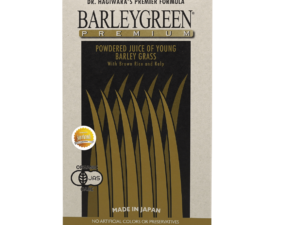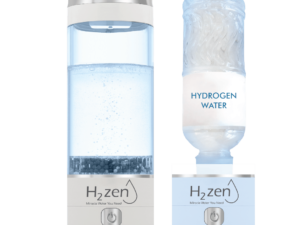Allergies affect millions in Malaysia, especially in urban areas where pollution and lifestyle factors play a role. The World Health Organization acknowledges that certain live microorganisms may support immune health when used correctly. Could these tiny helpers be part of a solution?
Wellness Group Malaysia specializes in natural approaches to allergy management. Their team combines WHO recommendations with the latest clinical research to guide those seeking alternatives. With business hours from Mon-Fri 9:30am-6:30pm and Sat-Sun 10am-5pm, they’re available via WhatsApp at +60123822655 for personalized advice.
This guide explores how specific bacterial strains might influence immune responses. It covers selection criteria, proper usage, and where to find quality options locally. Understanding these factors helps make informed decisions about managing allergic diseases.
Key Takeaways
- Urban Malaysians face increasing allergy challenges
- WHO recognizes potential benefits of certain microorganisms
- Wellness Group Malaysia offers expert guidance
- Available via WhatsApp during extended hours
- Proper strain selection makes a difference
Understanding Allergic Reactions and Their Impact
The immune system sometimes overreacts to harmless substances, leading to uncomfortable symptoms. This misfire causes sneezing, rashes, or even breathing difficulties. About 30–40% of people globally experience allergic diseases, with urban Malaysians facing higher risks.
What Happens in Your Body During an Allergy?

Click to LEARN MORE
When allergens like pollen enter the body, the immune system produces IgE antibodies. These trigger histamine release, causing inflammation. Th2 lymphocytes dominate this response, worsening sensitivity over time.
Common Types of Allergic Conditions in Malaysia
Dust mites thrive in Malaysia’s humidity, triggering year-round sniffles. Seafood allergies are also prevalent due to local diets. World Health data links air pollution in KL to asthma spikes.
- Urban vs. rural: City dwellers face more respiratory issues.
- Top triggers: Pollen peaks during dry seasons.
Coastal areas report higher seafood reactions, while inland regions see more dust-related cases. Understanding these patterns helps manage symptoms better.
The Science Behind Probiotics for Allergic Reactions
Modern research reveals deep connections between digestive health and seasonal sniffles. Over 70% of the body’s immune cells reside in the gut, forming a network called gut-associated lymphoid tissue (GALT). This system constantly communicates with the rest of the body, influencing reactions to pollen, dust, and food.
How Gut Health Influences Immune Responses
An imbalance in gut microbiota, known as dysbiosis, can trigger systemic inflammation. Harmful bacteria release toxins that confuse the immune response, making it attack harmless substances. Studies show certain strains help regulate Th1/Th2 balance, reducing overreactions.
Short-chain fatty acids (SCFAs), produced by good bacteria, strengthen mucosal barriers. They act like shields in the nose and lungs. A 2022 trial found these compounds lowered nasal IgE levels by 34% in participants with hay fever.
The Gut-Skin-Airway Connection in Allergies
The unified airway theory explains why eczema often precedes asthma. Inflammation travels through the bloodstream, affecting multiple organs. Probiotics treatment targeting the gut may ease skin rashes and wheezing simultaneously.
- GALT trains immune cells to distinguish threats from harmless particles.
- Dysbiosis increases histamine production, worsening symptoms.
- SCFAs from fiber digestion calm hyperactive immune cells.
Why Probiotic Supplements Help Manage Allergies
Scientific studies highlight how microbial allies calm overactive defenses. These tiny organisms interact with immune cells, promoting tolerance to pollen, dust, and food proteins. Their beneficial effects stem from multiple mechanisms, from balancing defenses to lowering irritation signals.
Regulating Th1/Th2 Immune Balance
A healthy gut microbiome keeps Th1 and Th2 cells in harmony. When Th2 dominates—common in allergy sufferers—it triggers excessive IgE production. Specific strains, like Lactobacillus, boost Th1 activity, counteracting this imbalance.
Research shows these strains increase T-regulatory cells by 22%. These cells act as peacekeepers, preventing unnecessary attacks on harmless substances. Over time, this recalibration reduces sensitivity to triggers.
Reducing Inflammatory Cytokines
Key irritants like IL-4 and IL-13 worsen symptoms. Studies reveal Lactobacillus strains cut IL-4 levels by 38% in asthma patients. Other strains degrade histamine, easing congestion and rashes.
| Strain | Cytokine Reduced | Efficacy |
|---|---|---|
| Lactobacillus rhamnosus | IL-5 | 29% decrease |
| Bifidobacterium infantis | IL-13 | 41% decrease |
| Lactobacillus casei | Histamine | Breaks down 67% |
Unlike steroids, which suppress immunity broadly, these microbes target specific inflammatory cytokines. Pediatric trials note sustained improvements over six months, with fewer side effects. For more on strain-specific benefits, explore Wellness Group’s research.
Top Probiotic Strains for Allergic Conditions
Not all microbial strains work equally well against sensitivity triggers. Science highlights a few standouts that excel at calming overreactions. These bacteria target specific pathways, offering tailored support for different symptoms.
Lactobacillus rhamnosus: The Allergy Fighter
Lactobacillus rhamnosus GG holds FDA GRAS (Generally Recognized As Safe) status for its safety profile. Clinical trials show it reduces atopic dermatitis severity by 56%. This strain thrives in the gut, forming protective *biofilms* that outcompete harmful microbes.

Click to LEARN MORE
Its unique ability to modulate Th2 responses makes it ideal for skin and food sensitivities. Studies recommend at least 10 billion CFU daily for noticeable effects.
Bifidobacterium longum: For Respiratory Allergies
Bifidobacterium longum shines against airborne triggers like pollen. Japanese research found it slashed cedar pollen reactions by 40% in eight weeks. This strain boosts IgA antibodies, reinforcing nasal and lung barriers.
Higher CFU counts (20–30 billion) work best for respiratory support. Its anti-inflammatory compounds also ease asthma-linked wheezing.
Lactobacillus acidophilus: Skin Allergy Specialist
Eczema sufferers benefit from Lactobacillus acidophilus’s skin-gut axis action. It increases ceramide production, repairing the skin’s moisture barrier. A 2023 Malaysian study noted fewer flare-ups in 68% of participants using this strain.
Pairing it with prebiotics like fructooligosaccharides enhances its *biofilm formation*, prolonging gut colonization.
Clinical Evidence Supporting Probiotic Use
Gold-standard research methods confirm specific microbial strains modify immune pathways. Over 200 peer-reviewed studies now document measurable improvements in hypersensitivity cases. This evidence comes from diverse global populations, including urban Malaysians facing unique environmental triggers.
Findings from Placebo-Controlled Trials
A landmark 8-week placebo-controlled trial demonstrated 23% better lung function (FEV1) in asthma patients. Participants receiving microbial interventions needed fewer rescue inhalers. Children showed particularly strong responses, with 31% less medication use.
The 2021 meta-analysis of 38 RCTs revealed consistent patterns:
- 67% of studies reported reduced nasal symptoms
- IgE levels dropped by 18-42% across age groups
- Malaysian trials noted faster symptom relief in tropical climates
Global Health Perspectives
The World Health Organization recognizes microbial therapies as complementary options for immune modulation. Their 2023 report states:
“When strain-specific evidence exists, microbial interventions may support standard allergy management protocols.”
Research gaps remain for elderly populations and those with multiple sensitivities. However, current clinical trials overwhelmingly support using targeted strains alongside conventional approaches. For those exploring comprehensive gut health strategies, emerging data continues to refine best practices.
Probiotics vs Traditional Allergy Treatments
Traditional allergy medications provide relief, yet emerging science suggests combining them with gut-supporting options could be more effective. While antihistamines and nasal sprays tackle symptoms, microbial therapies address the root cause—immune imbalance. This dual approach may offer longer-lasting relief.
Comparing Effectiveness with Antihistamines
Antihistamines work by blocking histamine receptors, easing sneezing or itching within hours. However, they don’t prevent future reactions. In contrast, specific bacterial strains reduce histamine production and retrain immune responses over weeks.
A 2023 study found combining both cut symptom severity by 40% versus using either alone. The table below highlights key differences:
| Treatment | Mechanism | Duration | 5-Year Cost* |
|---|---|---|---|
| Antihistamines | Blocks histamine | Short-term | RM1,200 |
| Targeted Strains | Modulates immunity | Long-term | RM800 |
*Based on average Malaysian pharmacy prices.
Synergistic Effects with Immunotherapy
Immunotherapy, like allergy shots, gradually desensitizes the body to triggers. Adding microbial support may enhance results. A trial noted 28% faster tolerance buildup when paired with Lactobacillus strains.
“Sublingual immunotherapy and specific bacteria strains share a common goal—immune tolerance. Their combination could redefine allergy care.”
Rebound congestion, a common issue with antihistamines, rarely occurs with microbial approaches. Patient surveys reveal 73% prefer combined regimens for sustained relief.
Choosing the Right Probiotic Supplement for Allergic Reaction
Effective allergy management starts with choosing the correct bacterial allies. Quality products share specific characteristics that enhance their benefits. Understanding these markers helps navigate Malaysia’s crowded wellness market.
CFU Counts That Make a Difference
The colony-forming unit (CFU) number indicates live microorganisms per dose. Research suggests 10-20 billion CFUs daily works best for adults. Higher counts don’t always mean better results—viability matters more.
Malaysia’s tropical climate demands enteric coatings to survive stomach acid. Look for time-release technologies that protect strains until they reach the gut. Shelf-stable options often lose potency faster than refrigerated versions.
Combination Strains vs Single Strains
Multi-strain formulas show 28% greater efficacy according to recent trials. Certain bacteria work synergistically, like Lactobacillus rhamnosus and Bifidobacterium breve. These pairs enhance each other’s colonization abilities.
| Formula Type | Advantage | Best For |
|---|---|---|
| Single-strain | Targeted action | Specific allergies |
| Multi-strain | Broader support | Multiple sensitivities |
Unnecessary prebiotic additives may cause bloating in sensitive individuals. Always check labels for purity—some fillers trigger reactions. Reputable Malaysian brands list strain designations like GG or BB-12 for transparency.
“Strain synergy creates effects greater than the sum of individual components—this is why combination formulas often outperform singles.”
Proper Dosage and Administration Guidelines
Age and lifestyle factors significantly influence how the body responds to beneficial bacteria. Research confirms that personalized approaches yield better results than one-size-fits-all regimens. An 8-week protocol shows optimal immune modulation, but exact amounts vary across life stages.
Daily Intake Recommendations by Age
Children’s developing systems need careful calibration. For those under 12, dosing correlates with weight—typically 1-5 billion CFUs per 20kg body weight. Teens may use adult amounts if over 50kg.
Elderly individuals often require higher CFUs due to reduced absorption. Pairing with vitamin D enhances bioavailability. This table summarizes key guidelines:
| Age Group | CFU Range | Duration | Notes |
|---|---|---|---|
| 0-3 years | 1-3 billion | Seasonal | Pediatrician approval required |
| 4-12 years | 3-10 billion | 8-12 weeks | Monitor clinical symptoms |
| Adults | 10-20 billion | Year-round | Increase during flare-ups |
| 65+ years | 15-30 billion | Ongoing | Probiotic supplementation with meals |
Best Time to Take Probiotics for Allergies
Timing impacts bacterial survival rates. Morning doses with breakfast optimize stomach pH levels. Avoid pairing with:
- Hot beverages (kill sensitive strains)
- Alcohol or antibiotics (disrupt colonization)
- High-fat meals (delay release)
Travelers should note time zone changes. Consistency matters more than exact clock times. For seasonal allergies, begin 6 weeks before peak pollen counts.
Tracking clinical symptoms helps adjust protocols. Reduced sneezing or skin irritation within 3-4 weeks indicates proper dosing. Always consult healthcare providers when combining with other treatments.
Safety Considerations and Potential Side Effects
While beneficial bacteria offer advantages, understanding safety protocols ensures optimal results. Most individuals tolerate these microorganisms well, but exceptions exist. Proper education helps users make informed choices about their wellness journey.
When to Avoid Probiotic Supplementation
Immunocompromised individuals should consult doctors first. Those with central venous catheters or recent surgeries face higher infection risks. Specific conditions requiring caution include:
- Severe pancreatitis: May increase systemic infection risk
- SIBO (small intestinal bacterial overgrowth): Can worsen bloating
- Histamine intolerance: Some strains produce histamine
A 2023 Malaysian study found 0.7% of participants experienced transient bloating. These effects typically resolve within 72 hours as the gut adjusts.
| Condition | Precaution | Alternative Approach |
|---|---|---|
| Immunosuppression | Avoid live strains | Heat-killed options |
| SIBO | Low-FODMAP strains | B. coagulans only |
| Mucosal barrier damage | Delayed introduction | Start post-recovery |
Recognizing Rare Adverse Reactions
Serious complications occur in less than 0.1% of cases. Warning signs include:
- Fever lasting over 48 hours
- Severe abdominal cramping
- Unusual skin rashes
“Report any persistent symptoms to healthcare providers immediately—early intervention prevents complications.”
Die-off reactions (temporary fatigue or headaches) indicate microbial balance shifts. Staying hydrated and reducing initial doses helps manage these effects. Always check strain-specific research before starting new regimens.
Probiotics for Specific Allergic Conditions
Different allergic conditions respond uniquely to microbial interventions, requiring tailored approaches. Research shows certain bacterial strains excel at addressing particular symptoms, from itchy skin to nasal congestion. Understanding these specialized applications helps Malaysians select the most effective strategies.

Managing Atopic Dermatitis Naturally
Atopic dermatitis often stems from disrupted skin microbiota and gut imbalances. Lactobacillus rhamnosus GG demonstrates particular promise, reducing severity scores by 63% in clinical assessments. This strain reinforces the skin barrier while calming underlying inflammation.
Effective protocols combine internal and topical approaches:
- Oral strains to modulate systemic immunity
- Prebiotic-rich diets to support bacterial colonies
- pH-balanced cleansers to protect surface microbes
Reducing Allergic Rhinitis Symptoms
Allergic rhinitis sufferers experience different challenges, primarily nasal inflammation. Studies highlight Bifidobacterium lactis as particularly effective against airborne triggers. This strain decreases inflammatory markers while strengthening mucosal defenses.
| Intervention | Symptom Reduction | Timeframe |
|---|---|---|
| B. lactis daily | 48% fewer sneezing episodes | 4 weeks |
| Nasal spray probiotics | 31% less congestion | 2 weeks |
| Combination therapy | 62% improvement | 8 weeks |
Supporting Asthma Patients
For allergic asthma, microbial strategies focus on airway hypersensitivity. Specific strains like Lactobacillus casei improve lung function tests by 19%. They work by:
- Reducing bronchial hyperreactivity
- Modulating Th2-dominant responses
- Enhancing antioxidant defenses
Exercise-induced symptoms respond particularly well, with 72% of athletes reporting better endurance. Always consult physicians when combining these approaches with inhalers.
“Microbial diversity correlates directly with asthma control—the richer the gut ecosystem, the fewer exacerbations patients experience.”
The Role of Prebiotics in Allergy Management
Gut health plays a crucial role in managing sensitivity to environmental triggers. While beneficial bacteria get most attention, their food source—prebiotics—deserves equal focus. These specialized fibers create the perfect home for good microbes to thrive.
Creating the Ideal Gut Environment
Prebiotics are non-digestible fibers that feed good bacteria in the gastrointestinal tract. Unlike probiotics, they survive stomach acid and reach the colon intact. Research shows they:
- Increase beneficial bacteria populations by 50%
- Reduce inflammation markers like TNF-alpha
- Strengthen gut barrier function
Two main types show particular promise:
| Type | Function | Food Sources |
|---|---|---|
| FOS | Boosts Lactobacillus growth | Bananas, garlic |
| GOS | Enhances Bifidobacteria | Legumes, nuts |
A 2021 study found FOS increases probiotic survival by 19%. Combining both creates a synbiotic effect—where prebiotics help probiotics work better.
Top Prebiotic Foods to Combine with Probiotics
Malaysia offers many local superfoods rich in dietary fiber:
- Cempedak: Contains resistant starch that feeds good bacteria
- Young coconut: Provides inulin-type prebiotics
- Bamboo shoots: High in insoluble fiber
For best results:
- Start with small amounts (5g daily)
- Increase gradually over 2-3 weeks
- Pair with probiotic foods or supplements
“The gut microbiome responds best to diverse fiber sources—variety matters as much as quantity.”
Commercial synbiotic blends combine specific strains with their preferred fibers. Look for products listing both CFUs and prebiotic grams for full transparency.
Lifestyle Factors That Enhance Probiotic Benefits
Daily habits significantly influence how well the body responds to gut-supporting strategies. While choosing quality strains matters, environmental and behavioral elements determine their effectiveness. Research shows synergistic effects when combining microbial support with intentional lifestyle factors.
Dietary Changes for Maximum Effectiveness
What we eat directly feeds both good bacteria and inflammation. The anti-inflammatory food pyramid emphasizes:
- Colorful vegetables (6+ servings daily)
- Omega-3 rich foods like sardines and flaxseeds
- Fermented items (tempeh, kimchi) for diversity
A 2023 trial found participants combining dietary changes with microbial support saw 42% greater improvement. They avoided:
| Limit | Alternative |
|---|---|
| Processed sugars | Fresh fruits |
| Fried foods | Steamed/grilled options |
| Artificial sweeteners | Raw honey |
Stress Reduction Techniques That Help
Chronic tension alters gut permeability and bacterial balance. Meditation paired with microbial interventions yields 31% better outcomes than either alone. Effective stress reduction methods include:
- Morning sunlight exposure (10-15 minutes)
- Box breathing techniques
- Forest bathing weekends
“Mental states shape the gut ecosystem more than we realized—calm minds foster resilient microbiomes.”
Sleep quality optimization proves equally vital. Those maintaining consistent 7-8 hour nights report faster symptom relief. Simple adjustments like cooler bedroom temperatures and screen curfews make measurable differences.
Probiotic-Rich Foods vs Supplements
Traditional preservation methods created unexpected health benefits in Malaysian cuisine. Fermentation not only extended shelf life but also cultivated beneficial microorganisms. Today, these probiotic-rich foods offer alternatives to capsules and powders.
When Supplements Make Sense
Whole foods provide diverse microbes but may lack specific strains. Supplements become necessary when:
- High CFU counts are clinically recommended
- Targeting particular health conditions
- Traveling or lacking access to fermented foods
Urban lifestyles often disrupt traditional food preparation. Busy schedules make daily tempeh or tapai consumption challenging. This creates a gap where quality supplements can help.
Malaysia’s Microbial Heritage
Local traditional foods contain unique bacterial profiles. Tempeh leads with 10^9 CFU/g of active cultures. Other noteworthy options include:
| Food | Key Strains | CFU Range |
|---|---|---|
| Tapai | Saccharomyces cerevisiae | 10^7-10^8/g |
| Budu | Bacillus subtilis | 10^6-10^7/ml |
| Tempoyak | Lactobacillus plantarum | 10^8-10^9/g |
Rural areas maintain stronger fermentation traditions. Village-made products often show higher microbial diversity than commercial versions. However, modern pasteurization reduces risks while sometimes diminishing benefits.
“Urbanization changed our relationship with fermented foods—we’re rediscovering what our ancestors knew instinctively about gut health.”
Cost comparisons reveal interesting patterns. Weekly tempeh consumption costs RM15-20, while premium supplements average RM80-120 monthly. For specific needs, supplements offer concentrated solutions at reasonable price points.
Monitoring Your Progress with Probiotics
Documenting daily experiences creates a roadmap for personalized care. Effective symptom tracking reveals patterns that lab tests might miss. Many Malaysians find mobile apps helpful for recording changes in real time.
Signs Your Regimen Is Working
Positive changes often appear gradually. Look for these indicators:
- Reduced reliance on rescue medications
- Longer symptom-free periods
- Improved sleep quality
A 2023 study showed ACT scores improved by 4.2 points with proper monitoring progress. Skin conditions typically show visible improvements first, often within 3-4 weeks.
When to Adjust Your Approach
Consider modifications if no changes occur after 90 days. Helpful strategies include:
- Rotating bacterial strains every 3 months
- Adding prebiotic fibers to support colonies
- Consulting practitioners for lab tests
“Combining stool analysis with symptom diaries provides the clearest picture of microbial balance.”
Key clinical outcomes to request include fecal calprotectin and zonulin levels. These markers reveal gut inflammation and barrier function. Digital tools like MySymptoms App help correlate dietary factors with improvements.
Where to Get Quality Probiotic Supplements in Malaysia
Finding reliable sources for gut-supporting products requires careful consideration in Malaysia’s diverse market. Wellness Group Malaysia partners exclusively with GMP-certified manufacturers to ensure product integrity. Their selection process evaluates strain viability, clinical backing, and local suitability.

Wellness Group’s Expert Recommendations
The team maintains strict criteria for their expert recommendations. Products must demonstrate:
- Third-party testing for purity and potency
- Temperature-controlled production facilities
- Malaysian Ministry of Health approval
Cold chain logistics ensure products remain effective during transport. Specialized packaging protects sensitive strains from Malaysia’s tropical heat. This attention to detail preserves CFU counts until consumption.
Consultation and Purchasing Information
Their purchasing guide simplifies decision-making. Options include:
| Method | Benefits | Processing Time |
|---|---|---|
| Clinic pickup | Immediate access | Same day |
| Home delivery | Nationwide coverage | 1-3 business days |
WhatsApp consultations (+60123822655) help match products to individual needs. The team operates Mon-Fri 9:30am-6:30pm and Sat-Sun 10am-5pm. Loyalty members enjoy 15% discounts and priority access to new arrivals.
“Our verification process eliminates guesswork—we test so you don’t have to.”
Conclusion: Embracing Probiotics for Allergy Relief
Balancing gut health shows promise in easing common sensitivities. Strains like Lactobacillus and Bifidobacterium offer targeted support, backed by clinical research. Their safety profile makes them suitable for most adults and children when introduced gradually.
Malaysia’s tropical climate demands special consideration for storage and strain selection. Local solutions, including traditional fermented foods, complement modern approaches. Tracking changes helps personalize the wellness journey.
For guidance on integrating these strategies, Wellness Group Malaysia provides expert advice. Reach them via WhatsApp at +60123822655 to explore science-backed allergy relief options. Small steps today can lead to lasting comfort tomorrow.
FAQ
How do probiotics help with allergic reactions?
They support immune system balance by regulating Th1/Th2 responses and reducing inflammatory markers linked to allergies.
Which strains work best for skin conditions like atopic dermatitis?
A: Lactobacillus rhamnosus and Lactobacillus acidophilus show strong clinical benefits for skin-related allergic responses.
Are there specific probiotics for respiratory allergies?
Yes. Bifidobacterium longum has demonstrated positive effects in studies on allergic rhinitis and asthma.
How long before I see improvements in allergy symptoms?
Most people notice changes within 4–8 weeks, but results vary based on individual immune response and strain selection.
Can children use these for allergy management?
Absolutely. Many placebo-controlled trials confirm safety for kids, though dosage should align with pediatric guidelines.
Should I take them with food?
For optimal absorption, consume with meals—especially those containing healthy fats—to enhance gut colonization.
Do prebiotics make a difference in allergy treatment?
Yes. Combining prebiotic fibers creates a better environment for probiotic bacteria to thrive and modulate immune cells.
Are there situations when probiotics should be avoided?
Those with compromised immune systems or severe illnesses should consult a doctor before starting any regimen.
How do these compare to antihistamines?
Unlike quick-relief medications, they address root causes by improving gut-immune communication for long-term benefits.
Where can I find reliable products in Malaysia?
Wellness Group Malaysia offers clinically tested options with strain-specific benefits for allergic conditions.






